Taking care of your garage door is a lot like maintaining your car. A little proactive effort—some visual checks, cleaning, lubrication, and safety tests—goes a long way. It’s the secret to keeping it running smoothly and catching small issues before they blow up into major, expensive problems.
Why a Garage Door Maintenance Plan Is a Smart Investment
Think about it: your garage door is the largest moving part of your entire home. It's heavy, complex, and you probably use it every single day. When you neglect it, you’re putting a ton of extra stress on critical parts like the springs, cables, and rollers, which inevitably leads to breakdowns. A consistent maintenance routine is hands-down the best way to extend its lifespan and make sure it works when you need it.
But this isn't just about avoiding the hassle of a door that won't open. A well-kept door is quieter and runs more efficiently. You'd be surprised how much of an impact a little upkeep has on your daily routine—no more waking up the whole house with a screeching door.
The Growing Importance of Proactive Care
It seems like more and more homeowners are catching on to this. The global garage door repair market was valued at around USD 2.5 billion in 2023 and is expected to climb to nearly USD 4.2 billion by 2032. That’s a huge jump, and it shows that people are prioritizing the health of their home’s most important systems instead of waiting for a total failure.
A proactive maintenance plan does more than just prevent repairs; it gives you peace of mind. Knowing your garage door is functioning safely is invaluable for protecting your family, pets, and property from accidents.
What You Can Achieve with Regular Maintenance
Following a simple, structured plan can make a world of difference in how your door performs. A great place to start is with our garage door maintenance checklist, which breaks down all the essential tasks.
Committing to a routine delivers some key benefits:
- Enhanced Safety: Regular checks on features like the auto-reverse sensors are non-negotiable. They’re what stop the door from closing on a person, pet, or object.
- Extended Lifespan: A little lubrication and tightening of the hardware reduce the daily grind on components, helping them last years longer than they would otherwise.
- Improved Performance: A clean, well-adjusted door glides smoothly and quietly. You can finally say goodbye to all those annoying squeaks, groans, and rattles.
Ultimately, learning how to maintain your own garage door puts you in control. The next sections will walk you through exactly what you need to do.
Mastering the Look, Listen, and Feel Inspection
Before you even think about grabbing a tool, remember that your own senses are the best instruments for a preliminary check-up. This "look, listen, and feel" approach is your first line of defense in any good maintenance routine, helping you spot small issues before they snowball into major headaches.
Think of it as learning to understand what your garage door is trying to tell you. Start by closing the door completely and giving it a good once-over from both the inside and the outside.
What to Look For
A visual inspection needs to be more than just a quick glance. You're actively hunting for specific signs of trouble that could compromise how your door works.
- Cables and Springs: Get a close look at the high-tension lifting cables. See any frayed spots, thinning, or broken strands? Now check the springs. Any visible gaps or significant rust are often the first signs that a spring is getting ready to break.
- Rollers and Hinges: Are the rollers cracked, chipped, or showing a lot of wear? Make sure they're sitting properly in the track. Give the hinges a look, too—any bends or cracks mean they're under serious stress.
- Weather Stripping: Check the rubber seal along the bottom of the door and the vinyl stripping on the frame. If it looks brittle, cracked, or has noticeable gaps, it's not doing its job of sealing your garage anymore.
This simple visual check is surprisingly effective. In fact, understanding how regular inspections reduce the need for garage door spring repair shows just how critical this step is in preventing a dangerous failure.
Listen for Warning Signs
Next up, it's time to use your ears. Go ahead and operate the door with the automatic opener, but listen carefully while it moves. A healthy garage door should make a consistent, relatively quiet humming sound.
Any out-of-the-ordinary noises like grinding, scraping, or loud popping are immediate red flags. Grinding could mean there's debris in the tracks or the rollers are shot, while a loud pop often points straight to a problem with the torsion springs. Learning to tell these sounds apart from normal operation helps you zero in on what's wrong.
A sudden change in how loud your door is is one of the clearest signs it needs attention right away. Don't just ignore what your door is trying to tell you.
Feel for Imbalance
Finally, let's do a manual test to check the door's balance. Start with the door fully closed. Find the red emergency release cord and give it a pull to disconnect the opener. Now, carefully lift the door by hand until it's about waist-high.
Let go. It should stay right where it is. If it starts to drift down or flies up on its own, the springs are out of balance. An imbalanced door puts a massive amount of strain on the opener, which will drastically shorten its lifespan. It should also lift without a fight—if it feels incredibly heavy or gets stuck, that's another sign of trouble.
Practical Garage Door Cleaning, Lubrication, and Tightening
Now that you've given your door a good look-over, it's time to get your hands dirty with the tasks that really make a difference. Cleaning, lubricating, and tightening are the big three of DIY garage door care. A few minutes spent here will cut down on wear and tear, get rid of those awful grinding noises, and keep your door running like new.
Start With a Deep Clean
Believe it or not, one of the most overlooked steps is simply cleaning the door—specifically, its tracks. You'd be amazed at how much dirt, cobwebs, and gritty junk builds up in there over time. That gunk forces the rollers to grind their way along instead of glide, putting a ton of extra strain on your opener motor.
Grab your vacuum with a brush attachment and clear out all the loose debris from inside the tracks. Once that's done, just wipe them down with a damp cloth and a gentle household cleaner to get rid of any grime left behind.
Apply the Right Lubricant
This is where a lot of people go wrong. The secret is knowing what to lubricate and, just as important, what kind of lubricant to use. Your goal is to reduce friction on moving metal parts, not create a sticky disaster that attracts more dirt.
Here’s how to do it right:
- Target Areas: Hit all the moving parts. This means the hinges where the door panels bend, the metal rollers (focus on the stems and bearings, not the nylon wheel), and the big torsion spring stretched out above the door. A light spray on the spring helps stop rust and keeps things quiet.
- Correct Lubricant: Always use a high-quality, silicone-based spray or white lithium grease that’s made specifically for garage doors.
- What to Avoid: Never use standard WD-40 for this job. It’s actually a solvent, not a true lubricant. It will attract dust and grime, making the problem even worse down the road.
I see this all the time: homeowners spray lubricant right into the tracks. The rollers need to roll, not slide. Greasing the tracks just creates a gummy mess that clogs up the whole system.
Proper lubrication is at the heart of how to maintain a garage door. It’s a fundamental part of keeping the massive global garage door market, which was valued at USD 20.92 billion in 2023, running smoothly. These systems are built to last, but they need the right care.
Tighten Loose Hardware
The constant vibration from your door going up and down every day will inevitably work some hardware loose. It's totally normal. Spending a few minutes with a socket wrench can stop a lot of rattling and prevent bigger issues from cropping up.
Go across the entire door, checking and gently tightening the nuts and bolts on all the hinges and brackets. Just be careful not to crank down on them too hard—overtightening can strip the bolts or even crack the door panels. You just want them to be snug.
For more hands-on advice on keeping your door in prime condition, you can find some great garage door repair tips to improve functionality. This quick check is an easy win to make sure every part of your system is secure and ready for action.
Of all the parts on your garage door, the safety systems are easily the most important. Think of them as the built-in guardians against accidents. Testing them regularly isn’t just a good idea—it’s a non-negotiable part of keeping your home safe.
Making these monthly checks a habit is one of the smartest things you can do for your family, pets, and property. The good news? These tests are incredibly simple and don’t require any special tools. Let's walk through the two main features every modern garage door has: the mechanical auto-reverse system and the photoelectric safety sensors.
Testing the Mechanical Auto-Reverse
First up is the door's ability to reverse on physical contact. This is the crucial mechanism that tells the door, "Hey, I just hit something, I need to go back up!" If the force limit is set too high, a heavy door can become a serious hazard.
To check this safely, grab something soft but solid. A roll of paper towels works perfectly, or even a spare 2×4 lying around in the garage.
- Place your test object flat on the floor, right in the center of the door's path.
- Stand back and use your remote or wall button to close the door.
- The moment the door touches the object, it should immediately stop and reverse all the way back up.
What if it doesn't? If the door keeps pushing down on the object, the force setting is dangerously high. It's time to pull out your garage door opener’s manual and find the instructions for adjusting the closing force. Do not use the opener again until you’ve corrected this.
A properly functioning auto-reverse mechanism is vital. According to the U.S. Consumer Product Safety Commission, thousands of injuries are linked to garage doors each year, many of which could be prevented by ensuring these safety features work correctly.
Checking the Photoelectric Safety Sensors
Next, let's look at the photoelectric sensors, which most people call the "electric eyes." You'll see these two small boxes near the floor on either side of the garage door opening. They shoot an invisible beam across the opening, and if anything breaks that beam while the door is closing, the door should instantly reverse.
Misaligned or dirty sensors are one of the most common reasons a garage door will refuse to close. Here’s a quick way to make sure they’re working as they should:
- Clean the Lenses: Dust, cobwebs, or a bit of grime can easily block the beam. Just wipe the lenses on both sensors with a soft, clean cloth.
- Check for Solid Lights: Most sensors have a small indicator light (often green or red). When they're aligned properly, both lights should be solid and steady. If one is flickering or off completely, gently wiggle the sensor until the light becomes solid again.
- Do the Obstruction Test: Start closing the door. While it's in motion, just wave your foot through the beam. The door should immediately stop its downward travel and shoot right back up.
This simple test confirms your sensors are on duty, protecting the opening from any obstructions. Adding these two checks to your monthly routine for how to maintain your garage door is a small investment that pays off big in safety and peace of mind.
Knowing When to Call a Garage Door Professional
Smart DIY maintenance is all about knowing your limits, especially when safety is on the line. While you can definitely handle tasks like cleaning, lubricating, and tightening loose hardware, some jobs carry serious risks and demand a professional’s touch. Drawing that line is one of the most important parts of maintaining your garage door.
The two big no-go zones for any homeowner are the springs and lifting cables. These parts are the muscle of your entire system, responsible for counterbalancing hundreds of pounds of door weight. If you don’t have specialized tools and training, trying to adjust or replace them is incredibly dangerous.
The High-Tension Danger Zone
Garage door springs, whether they're torsion springs mounted above the door or extension springs running along the sides, are under an enormous amount of tension. If a spring breaks or is mishandled during an adjustment, all that stored energy can be released in a split second.
This can turn the spring itself, your tools, or other door parts into high-speed projectiles. It’s no exaggeration to say it can be deadly.
Similarly, the lifting cables are under constant, intense strain. If a cable frays and snaps—or comes loose from its drum—the door can slam shut without any warning. Spotting the signs of wear early is the key to preventing a catastrophic failure.
To make it simple, we've put together a quick visual guide to help you decide when to tackle a task and when to pick up the phone.
The infographic clearly separates routine upkeep from high-risk repairs. The main takeaway? Anything involving the door's core lifting system falls squarely in the professional category.
When to Make the Call
So, what should you be looking for? Knowing the red flags will help you decide when it’s time to step back and let an expert take over. Here’s a quick rundown of clear warning signs that you have a problem with your springs or cables:
- A visible gap in a torsion spring. This is the classic sign of a snapped spring. You can’t miss it.
- Frayed or thinning lifting cables. Take a close look at the cables, especially near the bottom brackets where they connect to the door. Any broken strands or rust are bad news.
- The door suddenly feels incredibly heavy. If you pull the emergency release and can barely lift the door manually, a spring has almost certainly lost its tension or broken.
- You hear a loud "bang" from the garage. Homeowners often mistake the sound of a breaking spring for something far more dramatic, like a gunshot. It’s a definitive signal of failure.
Think of a professional service call as an investment in your safety, not just a repair cost. The risks tied to high-tension components are just too great to mess with on your own.
There’s a reason this service sector is so prominent. In fact, maintenance and repair services are projected to make up approximately 46.2% of the global garage door service market share by 2025. Doors are constantly exposed to weather and daily wear, making professional tune-ups essential for safe, long-term operation.
DIY vs. Professional Garage Door Tasks
To make things even clearer, here’s a breakdown of which tasks you can safely handle and which ones absolutely require a pro.
| Maintenance Task | Recommended For DIY | Call a Professional When |
|---|---|---|
| Cleaning Tracks & Sensors | Yes, a simple wipe-down is great. | You need to realign bent tracks or troubleshoot faulty sensors. |
| Lubricating Moving Parts | Yes, rollers, hinges, and tracks need it every few months. | You hear grinding noises even after lubricating. |
| Tightening Hardware | Yes, check bolts and screws on hinges and brackets. | The door is severely misaligned or off its track. |
| Testing Safety Features | Yes, you should test the auto-reverse and photo-eye sensors monthly. | The safety features fail your tests or work intermittently. |
| Adjusting Springs | Absolutely Not. This is extremely dangerous. | The door is unbalanced, heavy, or you see a broken spring. |
| Replacing Cables | Absolutely Not. These are also under high tension. | You see frayed, rusty, or snapped cables. |
| Replacing Panels | No, this often requires dismantling the door system. | A panel is dented, cracked, or damaged. |
| Fixing a Garage Door Opener | Only basic troubleshooting like changing batteries. | The motor is malfunctioning or the chain/belt needs adjustment. |
This table should serve as your go-to guide. If a task isn’t on the DIY list, your default move should always be to call for help.
Ultimately, while you can manage many parts of your garage door’s upkeep, understanding the dangers of garage door springs is non-negotiable. When you spot a problem with these critical components, the smartest and safest move you can make is to call a professional. Period.
Got Questions About Garage Door Care? We've Got Answers
Even with the best maintenance checklist, questions always come up. Getting clear, straightforward answers helps you handle your garage door with confidence and spot small issues before they spiral into big, expensive problems. Let’s tackle some of the most common questions homeowners ask.
How Often Should I Lubricate My Garage Door?
For most homes, a good rule of thumb is to lubricate all the moving parts twice a year. I always tell people to tie it to the seasons—do it once in the spring and again in the fall. Those are the times when big temperature and humidity swings can really affect how your door operates.
Of course, where you live matters. If you're near the coast dealing with salty air, or in a dusty, windy area, you'll want to bump that up to quarterly. Consistency is what really counts.
When you grab your lubricant, here's where to focus:
- Hinges: Give a light spray to every hinge that connects the door panels.
- Metal Rollers: Hit the bearings inside the rollers. Just be careful to avoid spraying the nylon part of the wheel.
- Torsion Springs: A light coat on the springs is all you need to prevent rust and keep them from getting noisy.
What’s the Deal With My Noisy Garage Door?
A noisy garage door isn't just annoying; it's your door's way of telling you something is wrong. Squeaking, grinding, and rattling sounds are almost always cries for help, but they usually point to simple fixes.
Before you jump to the worst-case scenario, do a quick check-up. Look closely at the rollers. Are they cracked or showing obvious signs of wear? Worn-out rollers are a top offender for noise. Next, take a socket wrench and gently check the nuts and bolts holding the brackets and tracks. Vibration can loosen them over time, so give them a snug tighten.
Finally, a fresh coat of a silicone or lithium-based lubricant on all the moving metal parts can work wonders. More often than not, these simple steps will quiet things down and get your door running much smoother.
One sound you should never ignore is a loud "BANG!"
That noise almost always means a torsion spring has snapped. If you hear it, stop using the door immediately and call a professional. Seriously, don't even try to open it.
Is It Safe to Adjust the Springs Myself?
Let me be crystal clear on this one: No. Absolutely not. Never, ever attempt to adjust, repair, or replace your garage door springs yourself. This is the golden rule of garage door maintenance.
Those springs—whether it's the big torsion spring above the door or the extension springs along the sides—are under an incredible amount of tension. They're wound extremely tight to lift a door that weighs hundreds of pounds.
If that tension is released improperly, the spring, winding bars, or any tool you’re using can fly off with enough force to cause devastating injuries or worse. This isn't a job for a DIY enthusiast. It demands special tools, proper training, and a deep understanding of the forces at play. Always leave anything involving the springs to a qualified technician.
If any maintenance task feels like it's out of your league, especially when it involves high-tension parts like springs, the smartest and safest move is to call for backup. The expert technicians at Security Door Gate and Fence are trained to handle every aspect of garage door repair and upkeep safely and correctly. Contact us today to schedule a service call and keep your door in top shape.


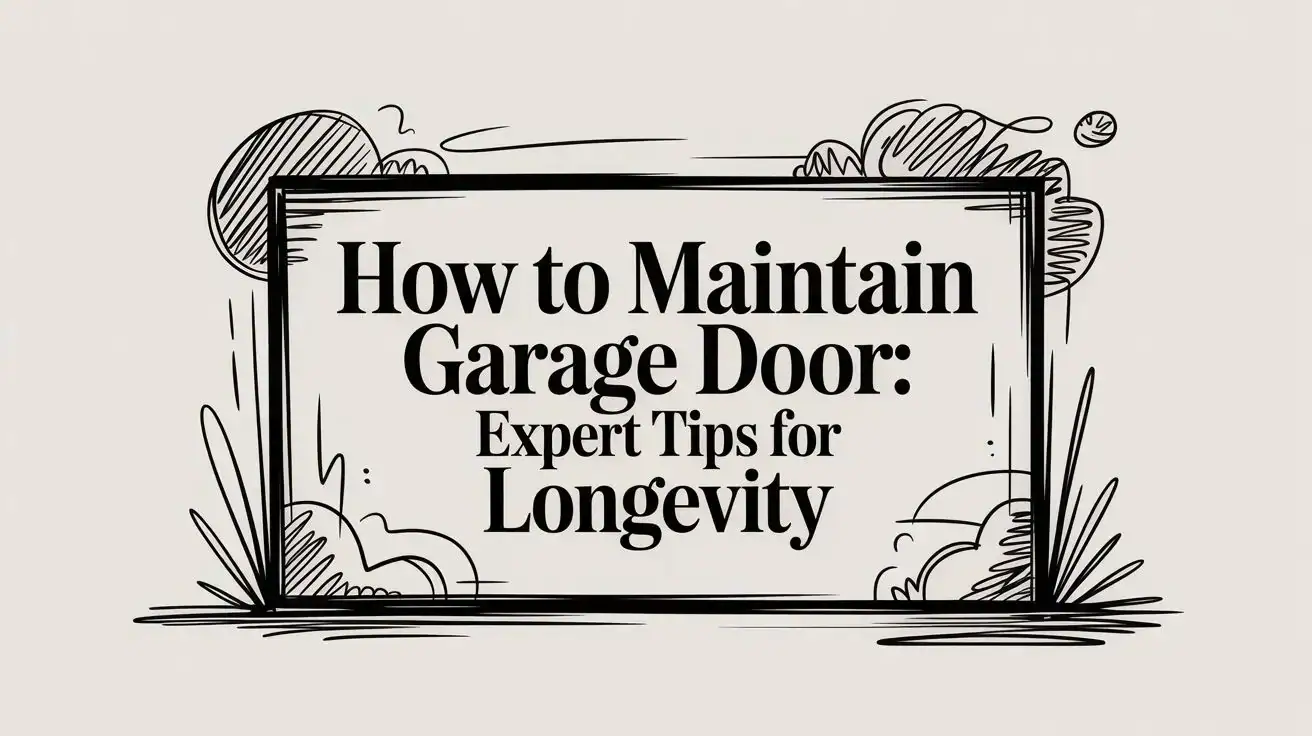
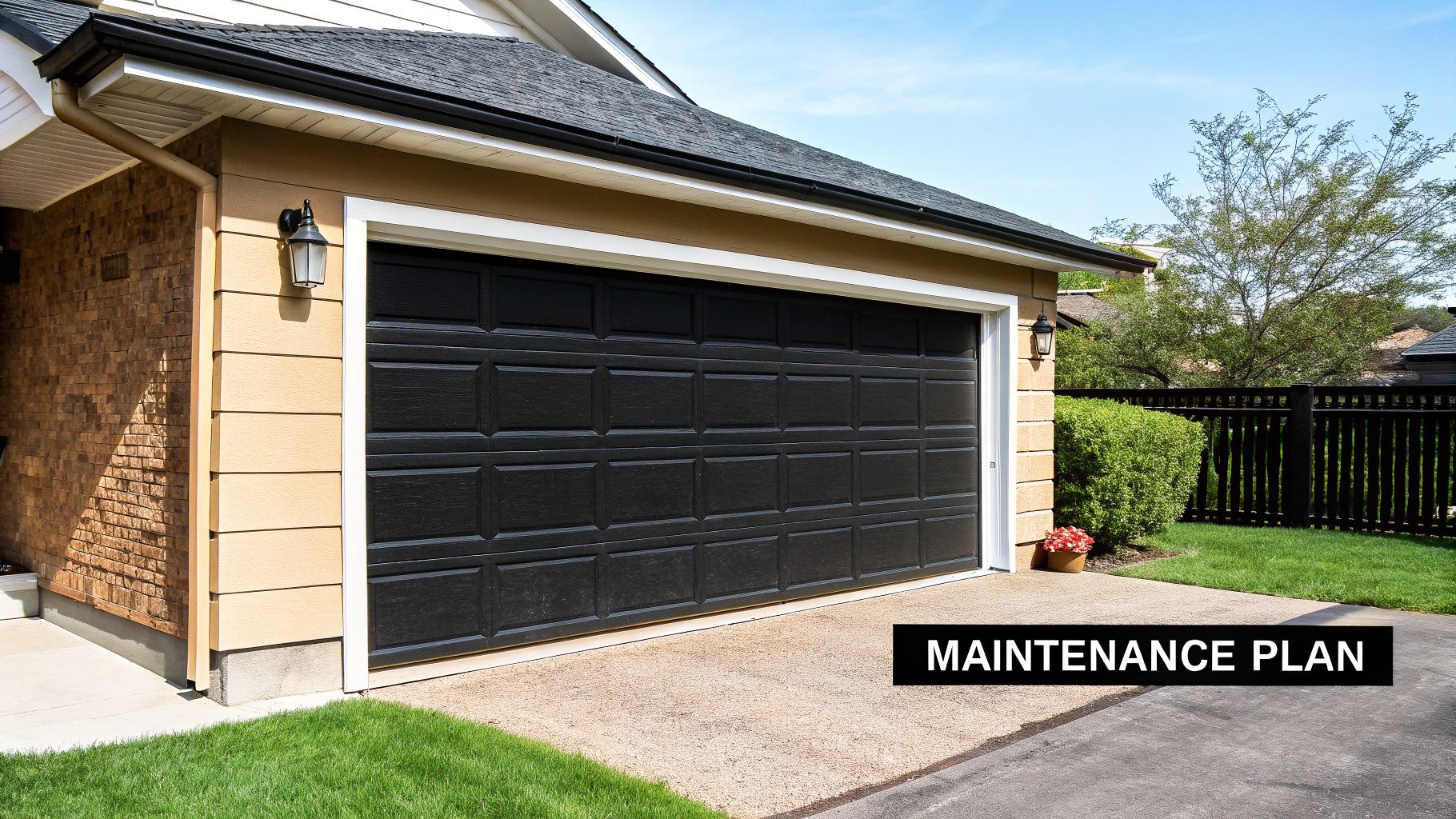
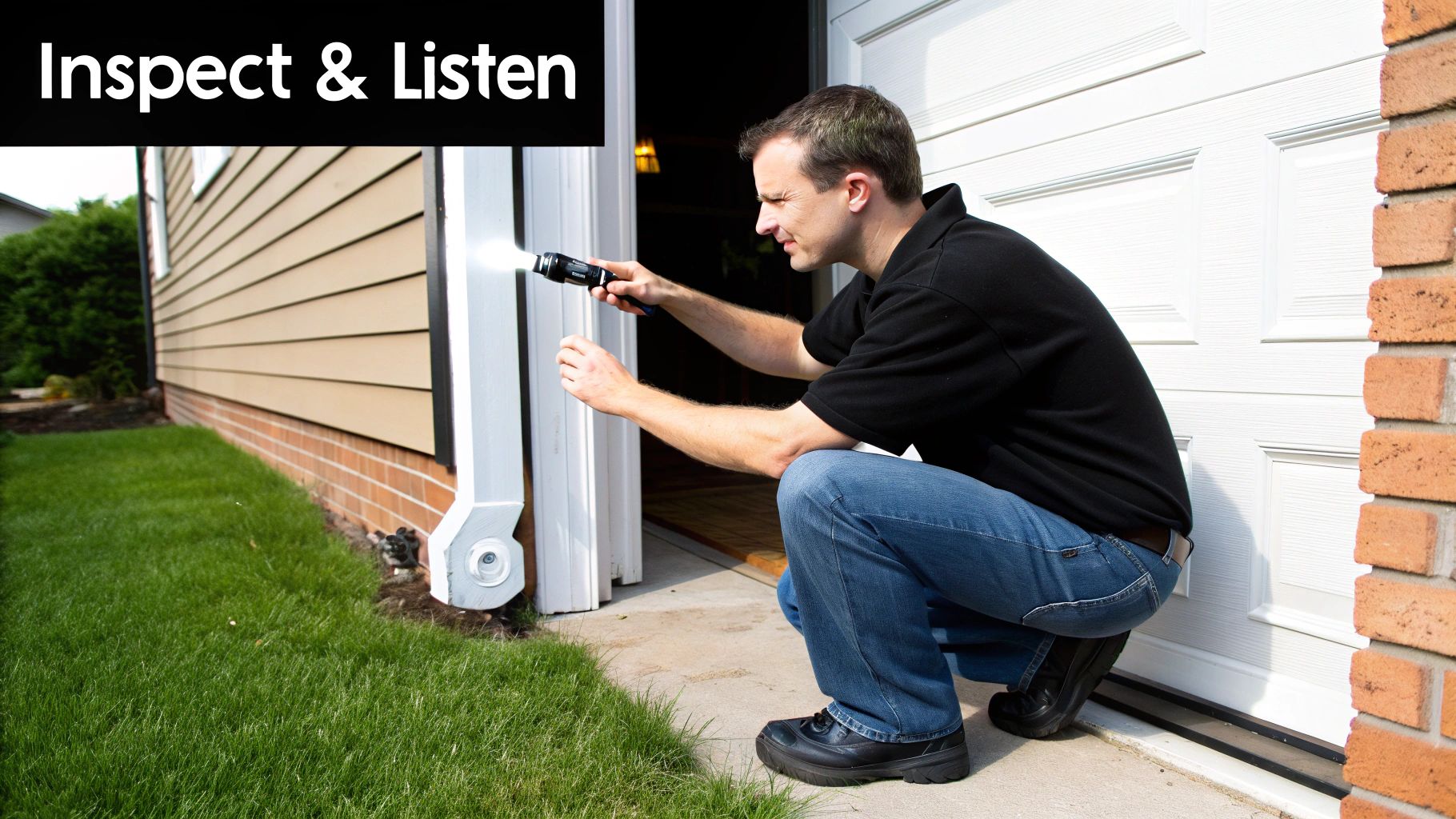
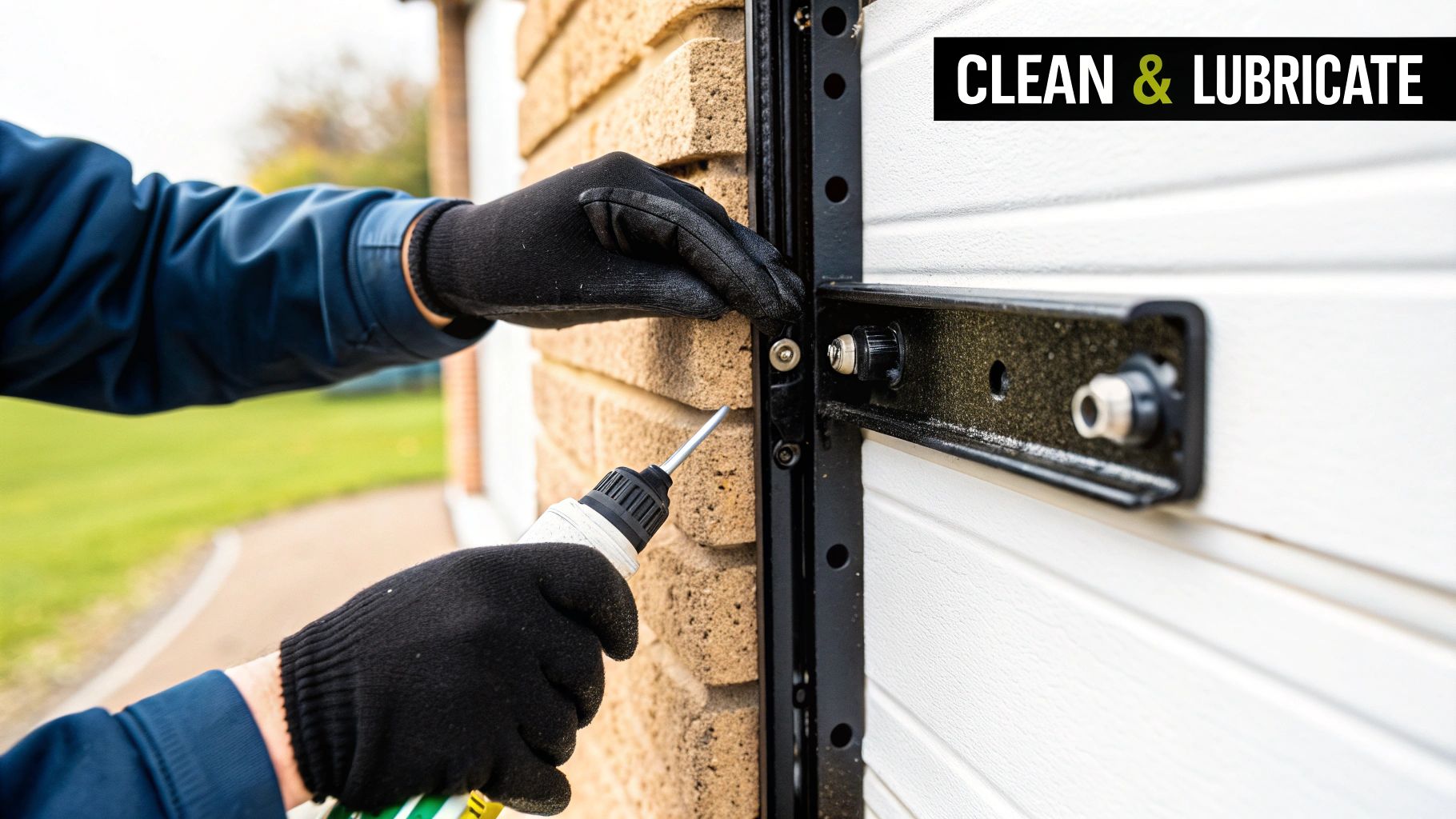
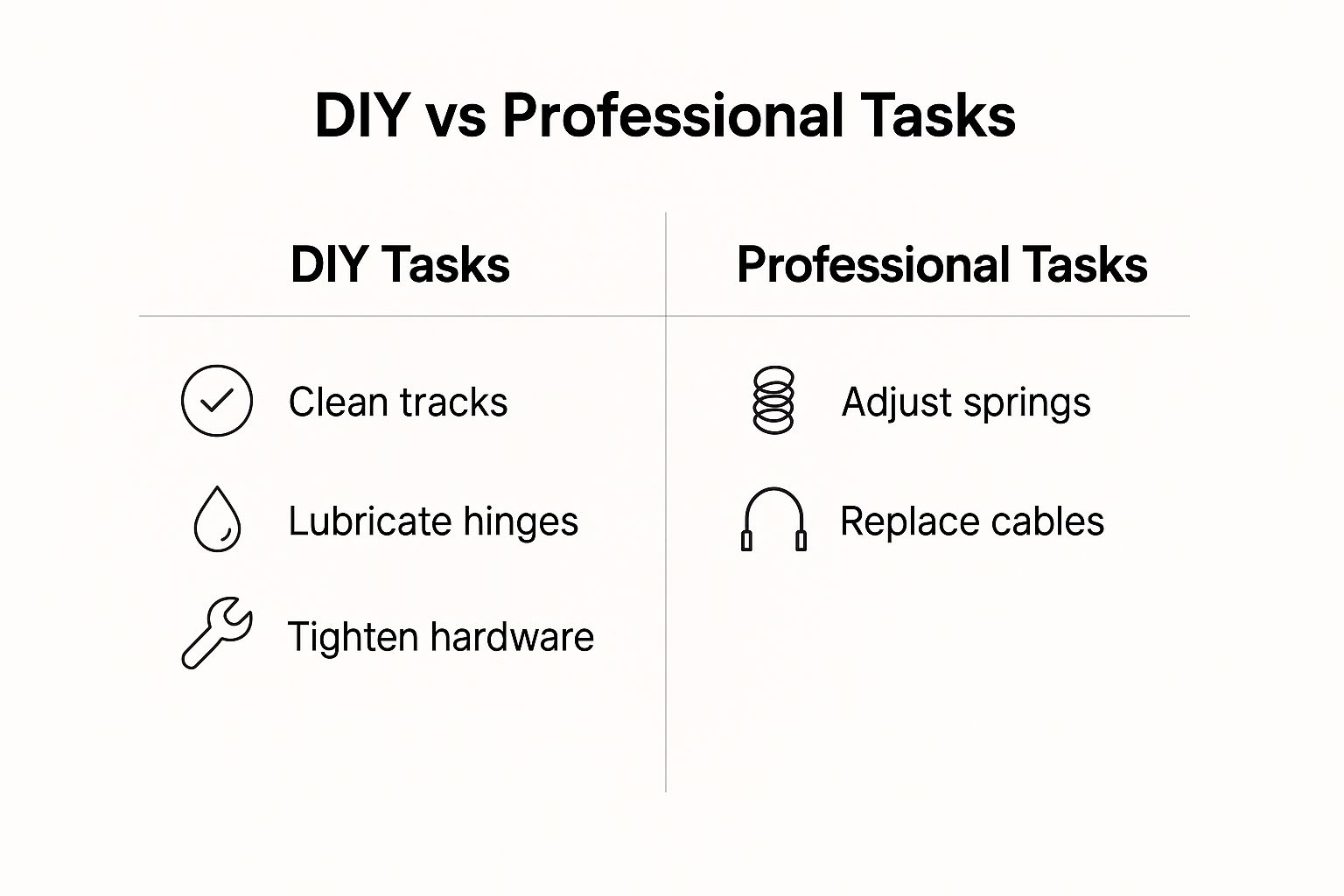
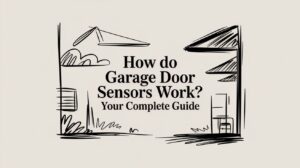
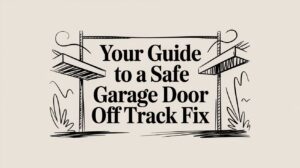


 (480) 548-0807
(480) 548-0807